Information Technology Reference
In-Depth Information
As with RIP, the
show ip protocols
command shown in Example 9-2 can be used to verify that
EIGRP is enabled.
Example 9-2
Verifying That EIGRP Is Enabled on HQ
HQ#
show ip protocols
Routing Protocol is “eigrp 1 “
Outgoing update filter list for all interfaces is not set
Incoming update filter list for all interfaces is not set
Default networks flagged in outgoing updates
Default networks accepted from incoming updates
EIGRP metric weight K1=1, K2=0, K3=1, K4=0, K5=0
EIGRP maximum hopcount 100
EIGRP maximum metric variance 1
Redistributing: eigrp 1
Automatic network summarization is in effect
Maximum path: 4
Routing for Networks:
172.16.1.32/28
10.10.0.0/21
Routing Information Sources:
Gateway Distance Last Update
172.16.1.38 90 6
172.16.1.42 90 7
172.16.1.34 90 49
Distance: internal 90 external 170
Another way to verify that EIGRP and other functions of the router are configured properly is to
examine the routing tables with the
show ip route
command. EIGRP routes are denoted in the routing
table with a
D
, which stands for DUAL.
Example 9-3 shows partial output from the routing table for B1 with the Null0 routes highlighted.
Example 9-3
B1 Routing Table with Null0 Routes
10.0.0.0/8 is variably subnetted, 9 subnets, 5 masks
D 10.0.0.0/8 is a summary, 00:01:50, Null0
D 10.10.0.0/22 [90/2172416] via 172.16.1.33, 00:01:45, Serial0/0/0
<remaining child routes omitted>
172.16.0.0/16 is variably subnetted, 4 subnets, 2 masks
D 172.16.0.0/16 is a summary, 00:01:50, Null0
C 172.16.1.32/30 is directly connected, Serial0/0/0
<remaining child routes omitted>






